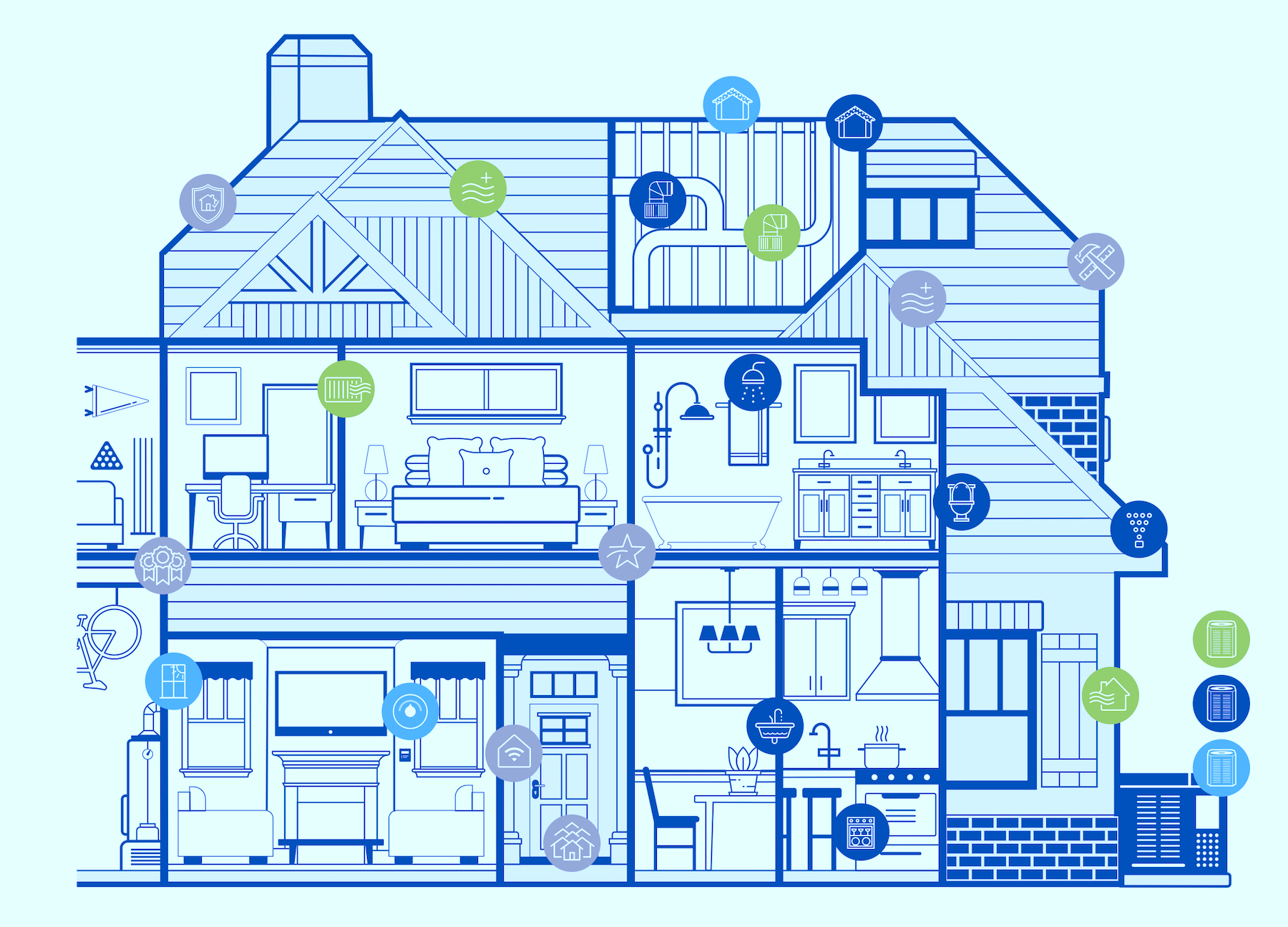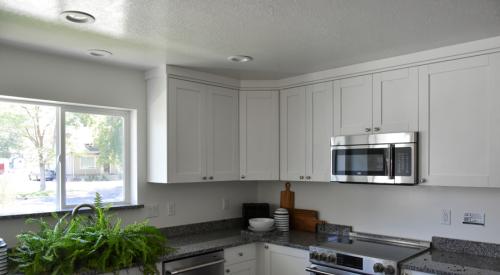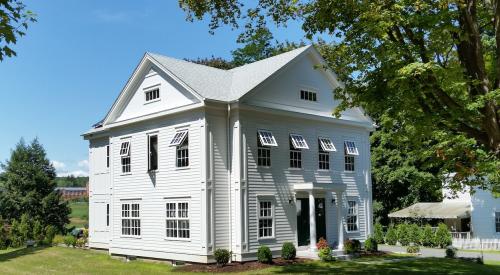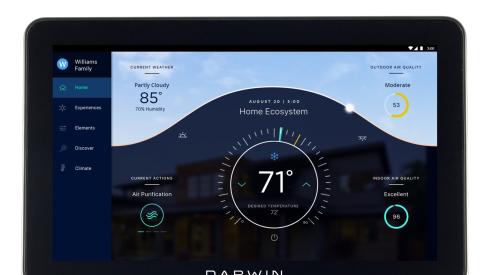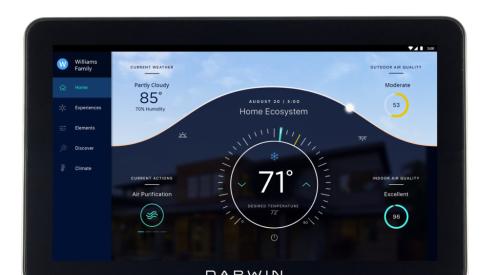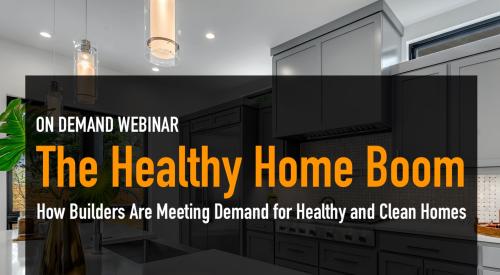For builders of healthy homes, the pandemic has ushered in a moment of opportunity. They should seize this moment—and give careful consideration to why healthy homes matter, what goes into them, and how to market them, according to CR Herro, vice president of innovation at Meritage Homes, one of the nation’s largest production home builders.

“Post-pandemic, all of us have an incredible opportunity and receptivity from consumers to inspire them to make good choices and select healthier built environments, to spend a little more to get significantly better-functioning homes,” Herro said.
At a recent event for the Healthy Home Alliance, Herro discussed five key components of healthy homes—and how builders can market them.
1. Indoor air quality
In our pandemic era, we’re all keenly aware, perhaps now more than ever, of the importance of clean air. Builders have a “responsibility to improve the air quality of the built environment,” Herro said.
That involves carefully considering the materials that go into a home’s construction and the volatile organic compounds (VOCs), such as formaldehyde, that those materials contain. Builders might opt for Green Label carpets or low-VOC paints. Beyond products, builders might also rethink process: They could paint or stain cabinets off-site, for instance.
But it’s not enough to reduce the sources of air pollutants in the home. Builders also have to ventilate and filter the indoor air. That’s all the more crucial now, given how tightly new homes get built.
“Because of that tight construction, if there’s something volatilizing in the built environment, whether introduced by construction materials or behavior, I need to have a strategy to reduce or eliminate it,” Herro said. That might mean installing tightly woven filters that can capture small particles, while still allowing the HVAC systems to circulate air.
2. Antimicrobial and easy-to-clean surfaces
Healthy homes incorporate antimicrobial materials for surfaces such as countertops, handles, and faucets. According to Herro, this feature’s value will continue to grow with greater economies of scale in the supply chain and efficiencies among the trades and with rising consumer awareness.
3. Humidity control systems
Builders of healthy homes need to strike the right balance between too dry and too damp, Herro said. Too much moisture, and biological contaminants such as mold might form. Too little, and it can stress the pulmonary system.
“It’s about bringing in not just outside air but fresh, filtered, dehumidified, and maybe even carbon-filtered air,” Herro said.
4. Water quality for drinking, cooking, bathing
“Look at the water people consume, bathe in, and cook in,” Herro said. Given the chlorine, heavy metals, and organic materials that public water supplies might contain, builders can improve the quality of drinking, cooking, and bathing water by installing in-home water treatments.
5. Lighting that accounts for circadian rhythm
In healthy homes, lighting means more than fixtures. These homes also might account for the circadian rhythm—our natural, internal 24-hour cycle that helps control our sleep and wake times.
“Artificial light negatively impacts our ability to get a good night’s sleep,” Herro said. So builders should consider how they design and position both the natural and artificial light sources in their homes—perhaps providing more light in the morning and less in the evening, for instance.
Healthy homes, healthy lives
Whatever their specific features, healthy homes serve a larger purpose: They help people live healthier lives. “Healthy homes are quickly evolving as not just a nice thing to do but almost a moral responsibility for all of us in this space to do,” Herro said.
Builders need to communicate that purpose to their buyers, Herro advised. More than simply install healthy home features, they need to promote consumer awareness. Greater awareness helps lead to economies of scale in the supply chain and trade base—in turn leading to a better built environment.
Builders should communicate the benefits not only of better health but also of the improved productivity it brings. Herro mentioned the example of a parent who has to leave work to care for an asthmatic child. “All that cascading, negative impact can be improved with relatively minor adjustments in the ways we build and the materials we build with,” he said. “A healthier home with less particulates and less VOCs can result in less asthma attacks.”
Meritage Homes can both create better indoor air quality and market it by adopting the standards of a trusted, established program such as the EPA’s Indoor airPLUS. “It creates consumer confidence that the approaches you’ve taken aren’t marketing BS but [based] in substantive facts around improving health,” Herro said.
Beyond the right thing to do, healthy homes deliver a marketplace advantage. “If you just look at price, square footage, and area, you’re going to have dozens of homes that meet those needs,” Herro said. “What we want to do as purveyors of better health in the built environment is create awareness that there’s good, better, and best among those good-enough homes.”
For more on how Meritage Homes designs and builds healthy homes, download the builder's Not All New Homes Are Created Equal brochure by clicking the button below.


